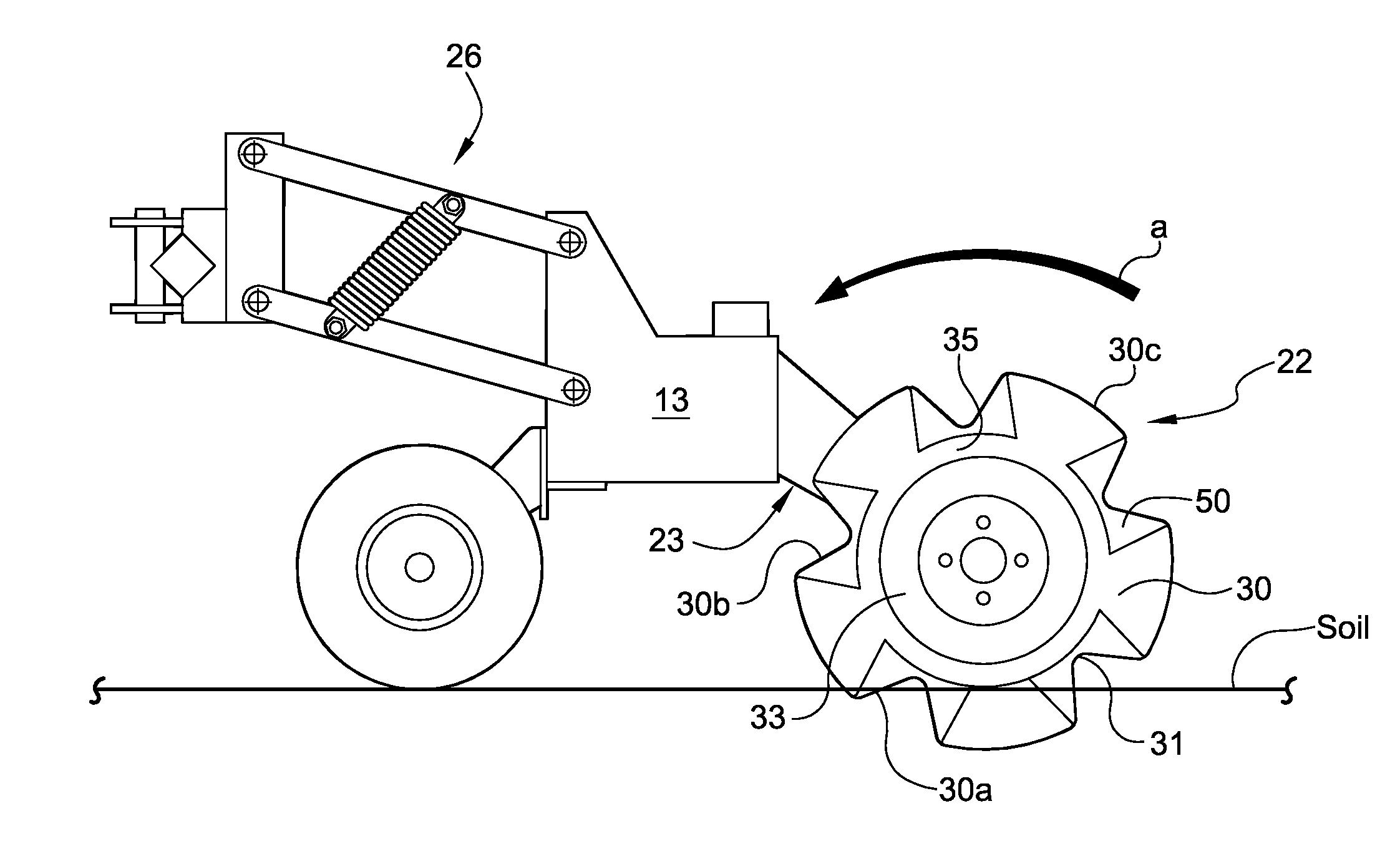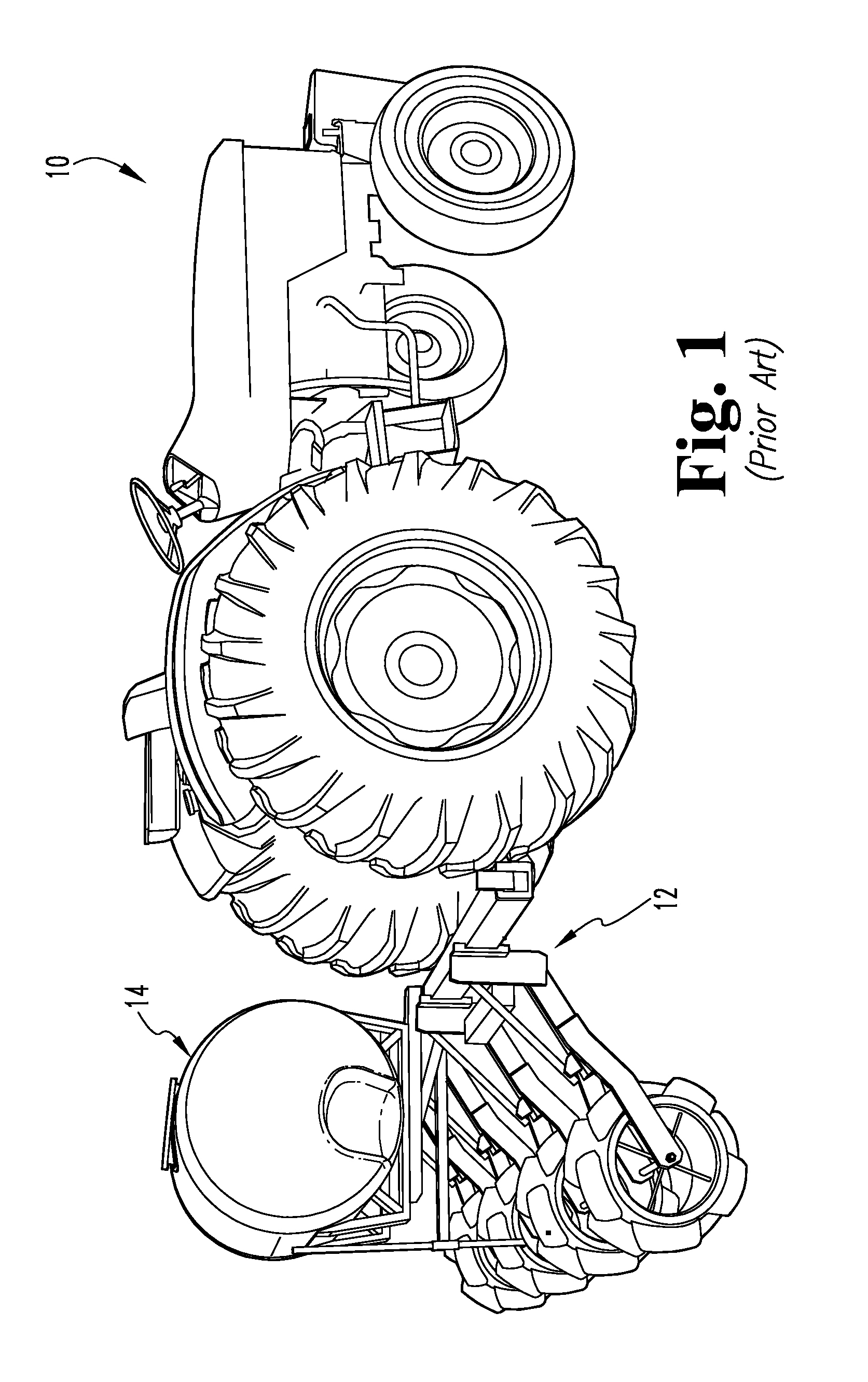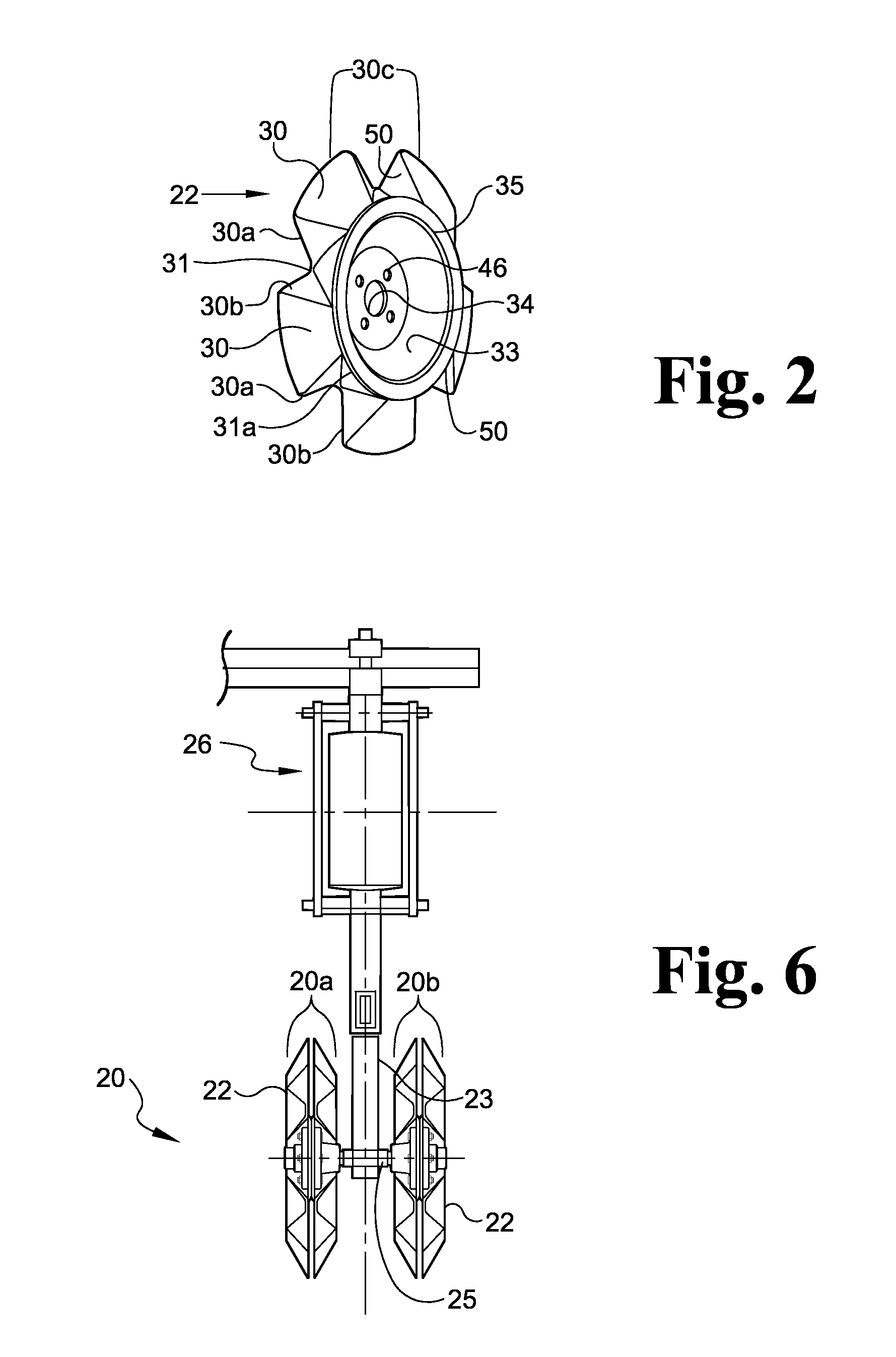Soil conditioning disc and configurable disc assembly
a technology of variable discs and soil conditioning discs, applied in soil-working methods, thinning machines, agriculture tools and machines, etc., can solve the problems of increasing production costs, increasing the rate of soil degradation around the globe, and global soil conditions continuing to decline, so as to increase soil oxygenation, reduce evaporation, and enhance soil permeability
- Summary
- Abstract
- Description
- Claims
- Application Information
AI Technical Summary
Benefits of technology
Problems solved by technology
Method used
Image
Examples
Embodiment Construction
[0050]FIG. 1 shows a conventional arrangement of a piece of farm machinery (tractor) 10 pulling a farm implement 12 for treating or managing the crop field soil. Applicant's soil-conditioning disc and variable disc assemblies are preferably similarly intended to be carried by a farm implement 12 and can either be pulled or pushed over the soil. Farm implement 12 can further be equipped with a seed hopper or fertilizer tank 14 well known in the art.
[0051]FIGS. 2, 3A and 3B show a preferred embodiment of the disc 22 provided by this invention comprising a generally star-shaped member having multiple (preferably at least two) peripheral extensions or protrusions 30 that extend radially outwardly from a central hub portion 32 having a central opening 34. As shown in FIG. 3B, disc 22 has a first side 22a, a second opposing side 22b, a central axis 22′ and a longitudinal axis 22″. The disc of this invention can have more or less peripheral extensions depending on a greater or smaller diam...
PUM
 Login to View More
Login to View More Abstract
Description
Claims
Application Information
 Login to View More
Login to View More - R&D
- Intellectual Property
- Life Sciences
- Materials
- Tech Scout
- Unparalleled Data Quality
- Higher Quality Content
- 60% Fewer Hallucinations
Browse by: Latest US Patents, China's latest patents, Technical Efficacy Thesaurus, Application Domain, Technology Topic, Popular Technical Reports.
© 2025 PatSnap. All rights reserved.Legal|Privacy policy|Modern Slavery Act Transparency Statement|Sitemap|About US| Contact US: help@patsnap.com



